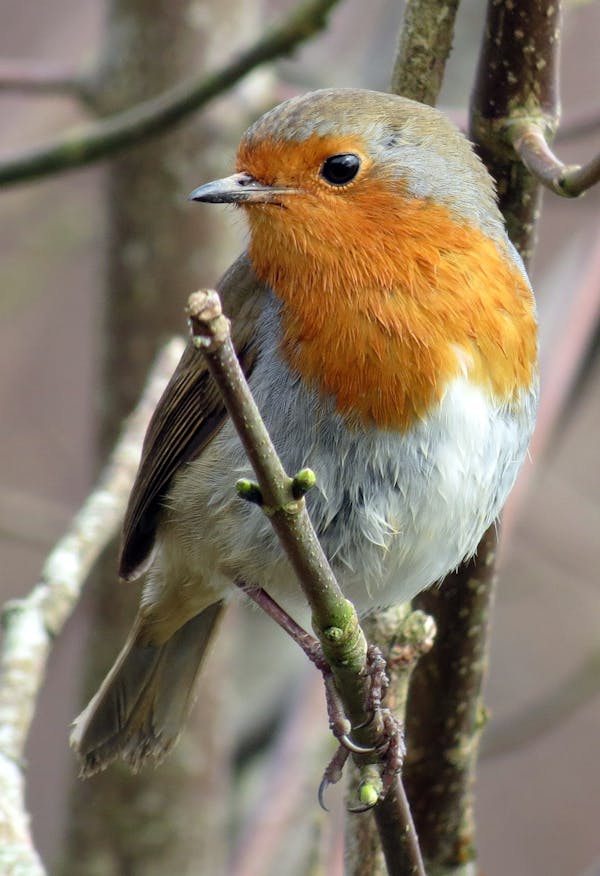
Robins are small, charming birds that are often associated with the arrival of spring. They are a member of the thrush family and are found throughout North America, Europe, and Asia.
Robins are known for their bright red-orange breasts and their sweet, melodious songs. In many cultures, the robin is seen as a symbol of renewal, hope, and new beginnings. These birds are popular among birdwatchers and nature enthusiasts, and they can often be spotted in parks, gardens, and other green spaces.
Which of the following statements is true about Blue Jays?
They are primarily herbivorous
They are found only in Africa
They are known for their brilliant blue plumage
They migrate to South America in the winter
How do Blue Jays typically obtain their food?
By hunting other birds and small animals
By eating seeds and nuts
By scavenging for food
By fishing in streams and ponds
What is the scientific name for the Blue Jay?
Cyanocitta cristata
Corvus corax
Passer domesticus
Falco peregrinus
Which of the following is a behavior associated with Blue Jays?
They build elaborate nests out of mud and twigs
They are known for their ability to imitate human speech
They form large, hierarchical social groups
They are nocturnal hunters.
In what kind of habitat are Blue Jays typically found?
Desert
Forest
Tundra
Grasslands
How do Blue Jays communicate with each other?
By singing complex songs
By using visual displays, such as wing displays
By using body language and vocalizations
By releasing pheromones.
How do Blue Jays defend their territory?
By attacking intruders with their beak and talons
By using their voice to scare away intruders
By releasing a foul odor to repel intruders
By building large nests to intimidate intruders
What is the average lifespan of a Blue Jay in the wild?
1-2 years
3-4 years
5-6 years
7-8 years
How do Blue Jays typically raise their young?
In large communal nests with other birds
In small, solitary nests
By laying their eggs in the nests of other birds
By carrying their eggs and young with them wherever they go.
What is the diet of Blue Jay chicks?
Seeds and nuts
Small insects and spiders
Small mammals and reptiles
Fish and other aquatic creatures
What is the name of the family of birds that Blue Jays belong to?
Corvidae
Falconidae
Passeridae
Strigidae
How do Blue Jays avoid predators?
By flying in large groups
By remaining hidden in dense foliage
By using their ability to mimic other birds' calls to fool predators
By making loud vocalizations to scare off predators
Very impressive!
Congratulations on your excellent score in the Blue Jay Quiz! Your knowledge of these colorful birds is impressive. Keep up the great work and keep learning more about these fascinating creatures.
There is still room for improvement!
It's okay if you didn't do as well as you hoped on this quiz. It's important to remember that everyone has room for improvement and it's a great opportunity to learn something new. Take some time to study the material and try again. With practice and dedication, you'll be able to do better next time. Don't give up!












